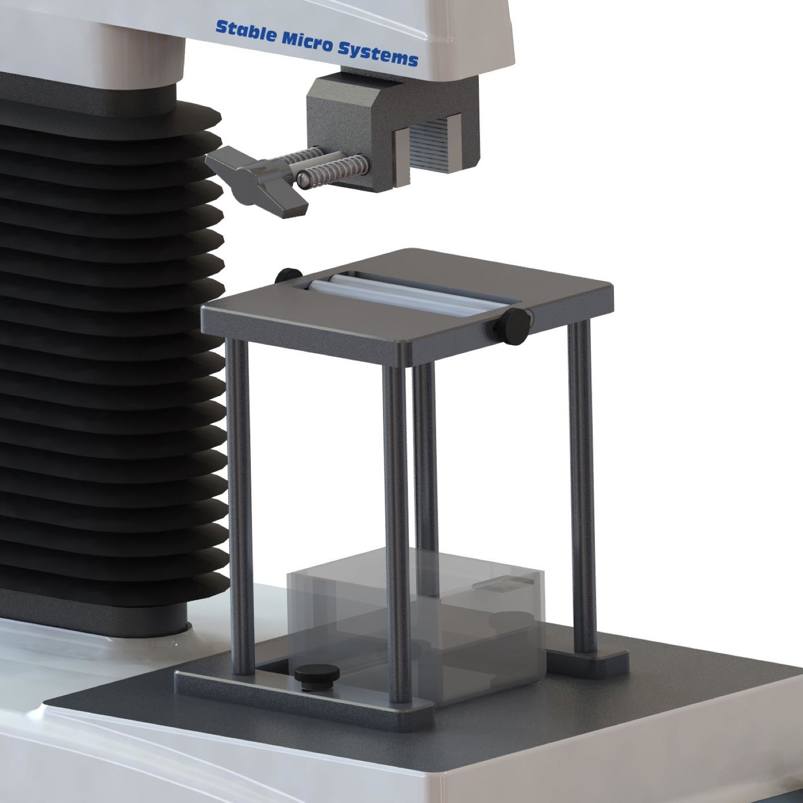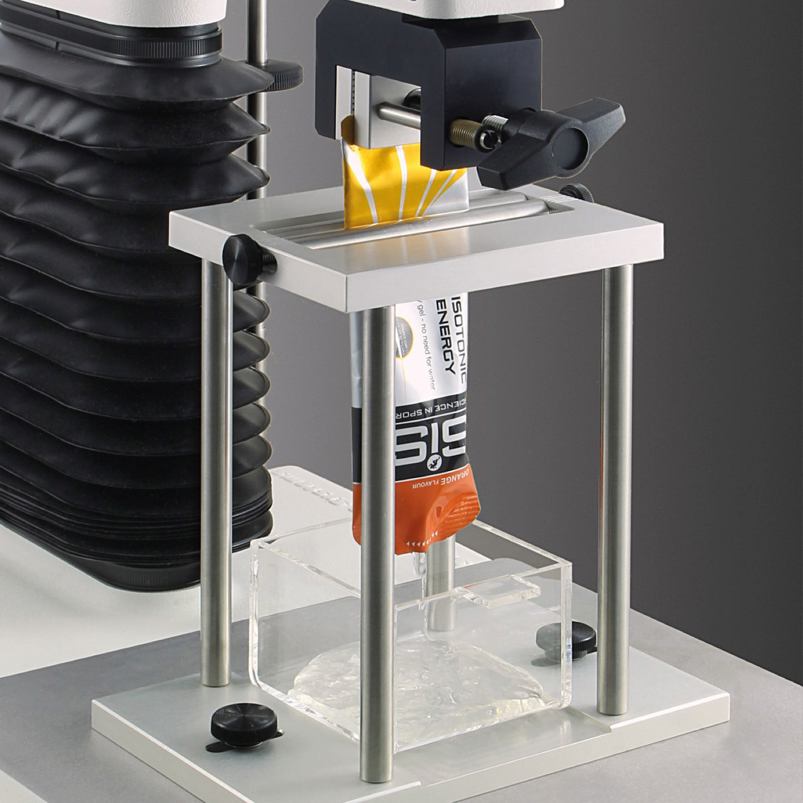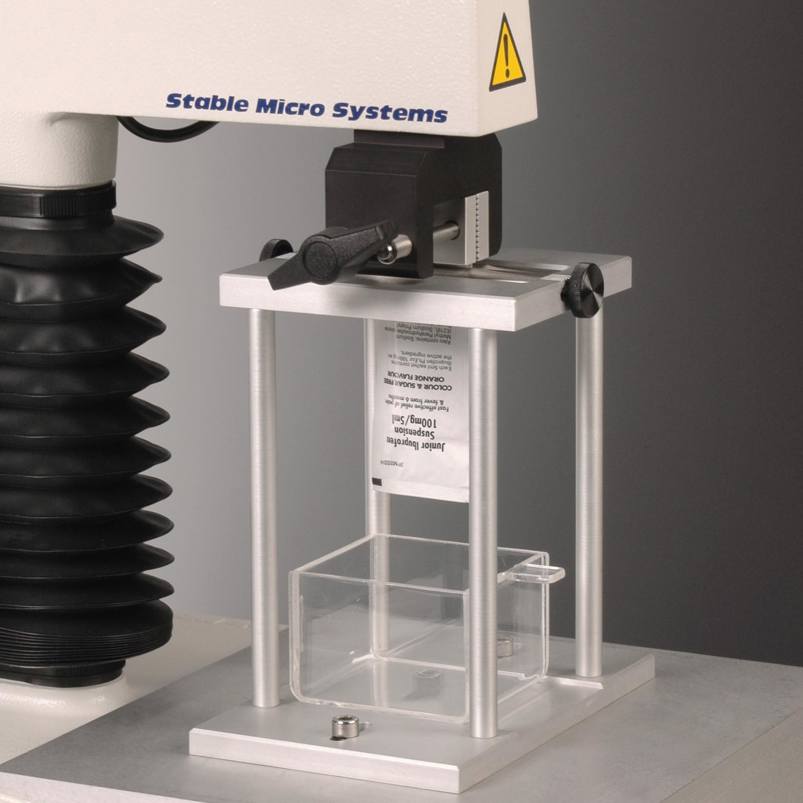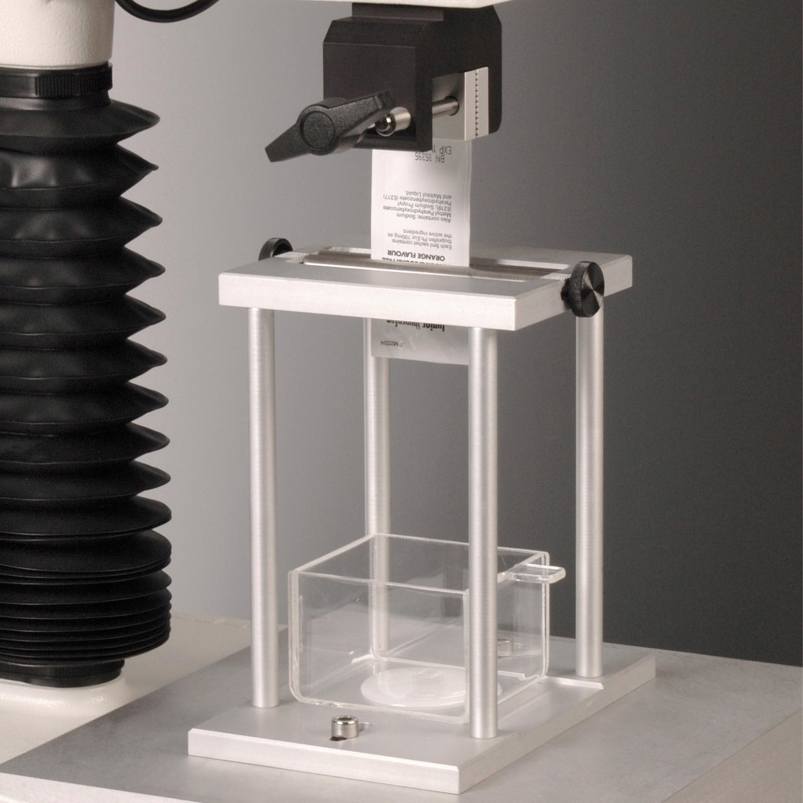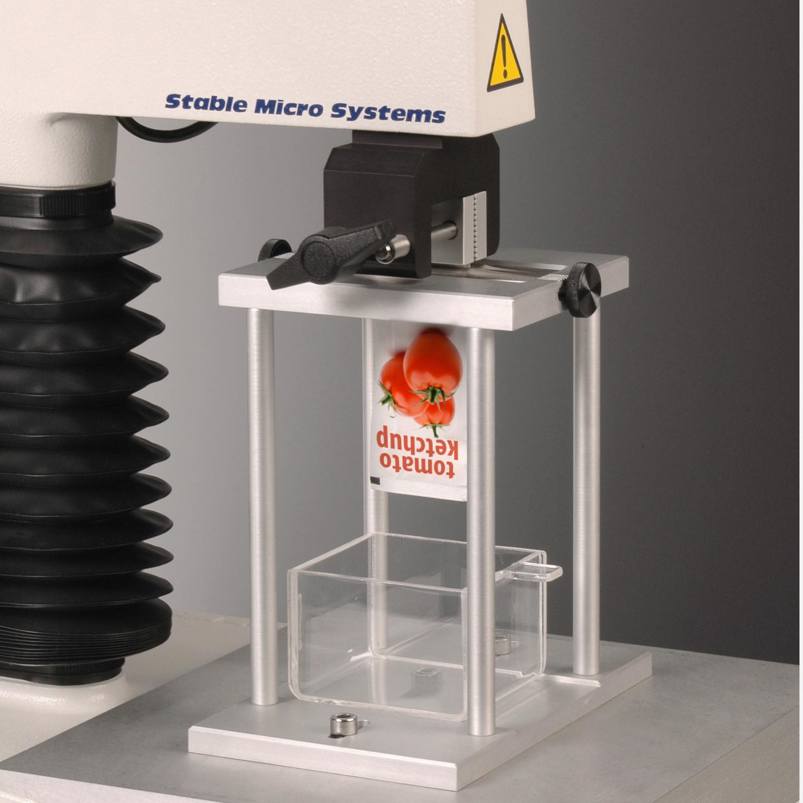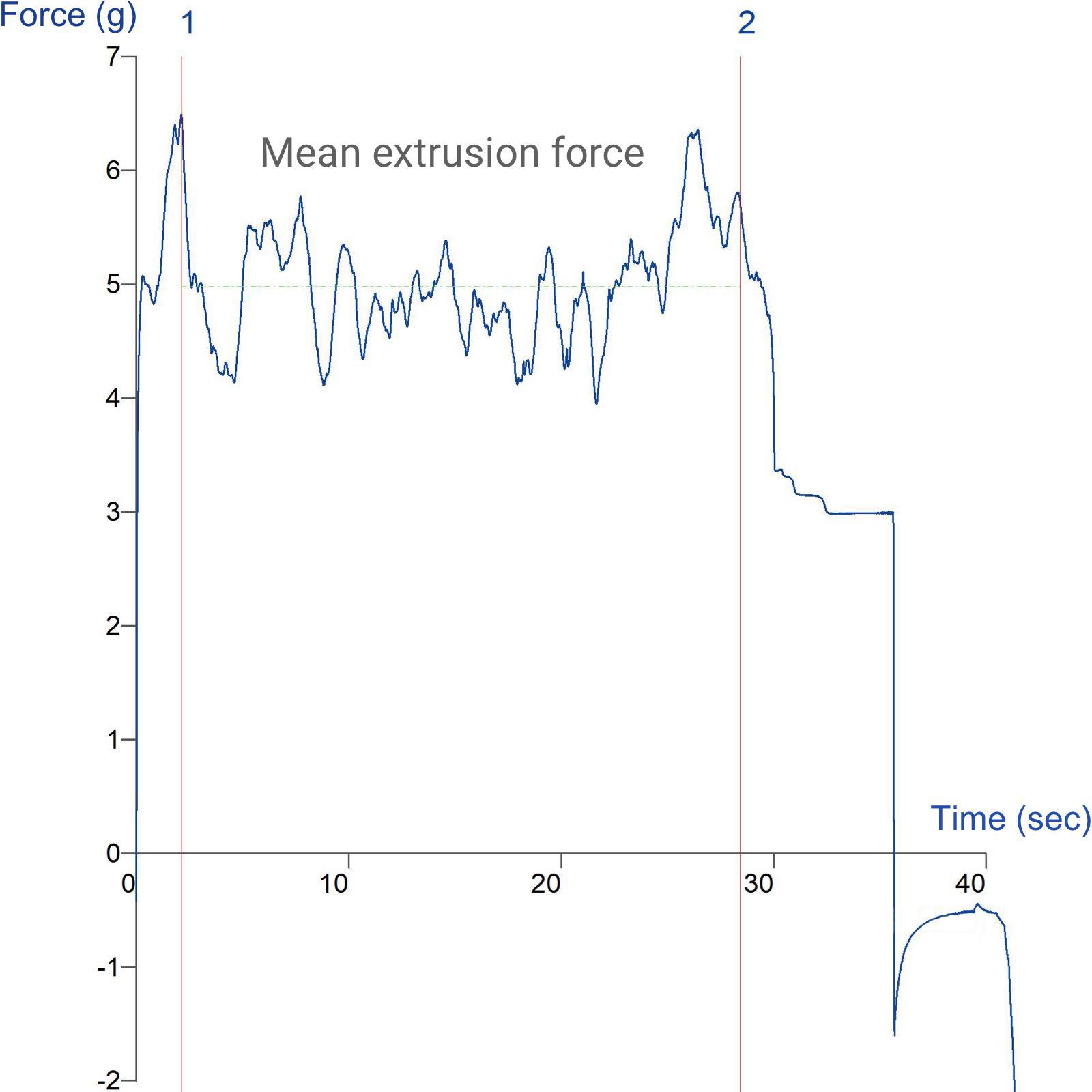Product overview
Many ready-made convenience sauces and condiments can be found in sachet portions for quick and easy use. Similarly, many personal care creams, ointments, gels and toothpastes are packaged in tubes for the purpose of travelling or quick and easy removal and application whilst providing an ideal solution for long-term storage until all of the contents have been used.
For sachet or tubed products, the ability to squeeze the contents out effectively is essential and is fundamental to its ease of removal from the packaging when required. Assuming the orifice size remains constant, the force to squeeze the packaging depends largely on the consistency of the e.g. paste/cream. If the substance is too dense, consumers will experience difficulty extracting it; if it is too fluid, the product could leak. The higher the force recorded during the test, the more difficulty a consumer would experience in squeezing out the required amount.
By testing the force required to extrude the contents of a sachet or tube at regular intervals over a long period of time product developers can analyse changes in a product’s consistency throughout its shelf-life and adapt formulations accordingly whilst also enabling manufacturers to assess the suitability of packaging material and its construction.
Such a test at an early stage of production could spell the difference between a successful and appealing product and one which will destroy the possibility of upgrading from sample sachet to long-term purchase of the high value larger volume cosmetic product. For manufacturers, failure at the last hurdle would bring disappointment and huge material losses.
This attachment allows the positioning of the end of a sachet or tube between two rollers. The packaging end is clamped with a grip which pulls the tube upwards through the rollers when the test is commenced and hence the contents of the sachet or tube are forced to extruded out of the orifice. The higher the force obtained during this test the more difficult a consumer would find to squeeze out their required amount.
How does the Sachet/Tube Extrusion Rig work?
Ideal sample form
Viscous liquid and semi-solid materials which are contained in a sachet or tube and their contents removed by pulling upwards between rollers.
Technical information
Installation
Full installation instructions are provided within the Education Zone of the latest Exponent/Connect software version and on the technical information sheet accompanying this product.
Chemical compatibility
Stable Micro Systems probes and attachments are commonly made from four materials: anodised aluminium (AA6082 T6), stainless steel (316 T), Delrin (acetyl copolymer) and Perspex (polycarbonate).
In general use, probes and attachments made from these materials will be suitable for testing food products and inert non-food materials.
The four materials listed above are not universally resistant to all types of chemicals and as such the compatibility of the probe/attachment material with the product (to be tested) must be established to prevent damage to the probes and attachments. If the compatibility of the product with the probe is unknown to the customer then the chemical information about the product (Material Safety Data Sheet or Product Data Sheet) should be submitted to Stable Micro Systems. Stable Micro Systems will then assess the suitability of the probe/attachment material for use with the product and advise accordingly. If this advice is not sought then Stable Micro Systems will not accept liability for probes/attachments damaged by chemical attack from the product being tested.
Cleaning and maintenance
All probes and attachments may be cleaned in warm (or hand hot) water using a mild detergent. A soft brush may be used but abrasive cleaning aids should be avoided. Stable Micro Systems products should not be microwaved or cleaned in a dishwasher.
Screw threads should be lightly lubricated after drying using a light lubricant, e.g. petroleum jelly, mineral oil. This will aid the fitting and unscrewing of the item. Each component of a probe or attachment should be wrapped separately when stored, to avoid scratching or chipping. This will safeguard against any unnecessary damage to the accessory.

